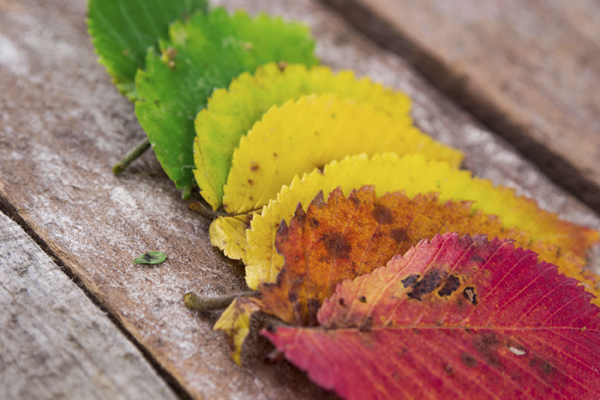Q. What causes trees to turn color in the fall? Is it the rain or the cold weather? I have a friendly wager with my neighbor that it’s the cold weather.
A. It’s neither the rain nor the cold that causes the autumn foliage color in deciduous trees. Instead, the trigger is the day length or more correctly, the length of the nights. Temperature does play a role as it accelerates or slows down the rate of change. In the Bay Area, fall color is at its peak in early November through early December. Pistache, Japanese Maple, Crape Myrtle, Ginkgo, Raywood Ash, Flowering Pear and Liquidambar are the primary landscape trees that change color. We also find a color change in a few evergreen plants. Star Jasmine, and Algerian Ivy turn a maroon color while boxwood is dirty brown. The beginning of fall color season does shift each year due to the weather.
Although it’s unlikely to occur in our area, very cold nights can ruin the vivid colors by causing cells in the leaves to rupture and die. Rain is never a factor in leaf color, but heavy cloud cover limits the ultraviolet light, so the chlorophyll, the green pigment, lasts longer; hence, leaves stay green longer. Warmer temperatures cause leaf cells to burn the accumulated sugars, so less red and purple pigments are formed with the yellow and orange being the predominant colors. The actual leaf color is determined by genetics. The dominant color gene is green while the red, yellow, orange, purple or any other recessive color pigments are only apparent when Chlorophyll isn’t being produced. Many trees have only one color pigment while trees with variegated foliage have several dominant pigments. A deciduous tree goes dormant before the change in the foliage color. Dormancy is defining as a plant that is stop activity growing. Among the same species, the range of colors can and will vary. It depends on whether or not the tree was propagated from seed or a vegetative part. Liquidambar, American Sweet Gum is an excellent example. The foliage color is unknown until the fall. Palo Alto, Burgundy and Festival are grafted varieties sold for their predictable foliage color. Unrelated to weather, plant stress can cause the foliage to change color out of season or very early. Drought is the usual cause but other cultural practices can be an issue. This type change in foliage color is an indicator of a problem. The ideal conditions for fall color are warm, sunny days and cool nights with little wind or drought stress. This is has been a fabulous year for the fall color while has year it was poor.
Q. I’ve had snapdragons in six-inch pots since the spring. If I plant them in the ground, will they become perennials?
A. Snapdragons are an annual and might survive the winter and bloom again but they’re not going to become a perennial. Impatiens, Fibrous Begonias and others commonly last more than one year, because of our mild winters. So I’d enjoy them and replant when necessary.
Buzz Bertolero is Executive Vice President of Navlet’s Garden Centers and a California Certified Nursery Professional. His web address is www.dirtgardener.com and you can send questions by email at dirtgarden@aol.com or to 360 Civic Drive Ste. ‘D’, Pleasant Hill, Calif. 94523 and on Facebook
at Facebook/.com/Buzz-Bertolero
